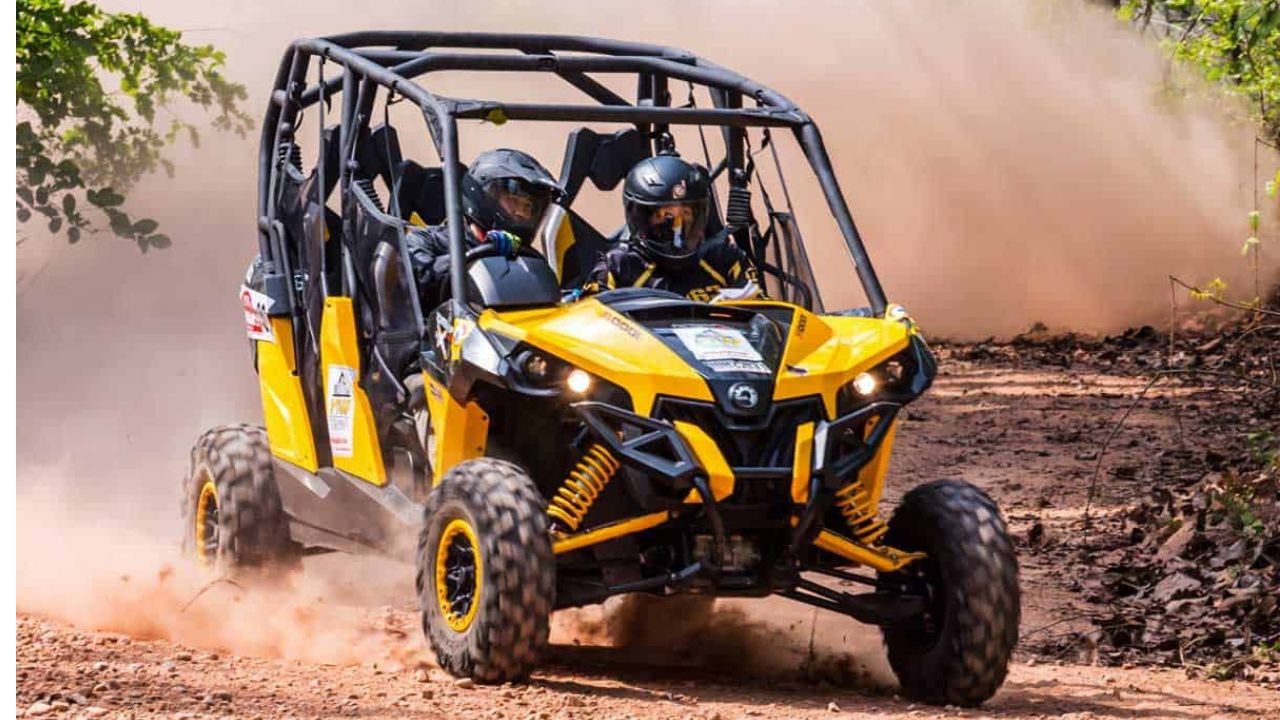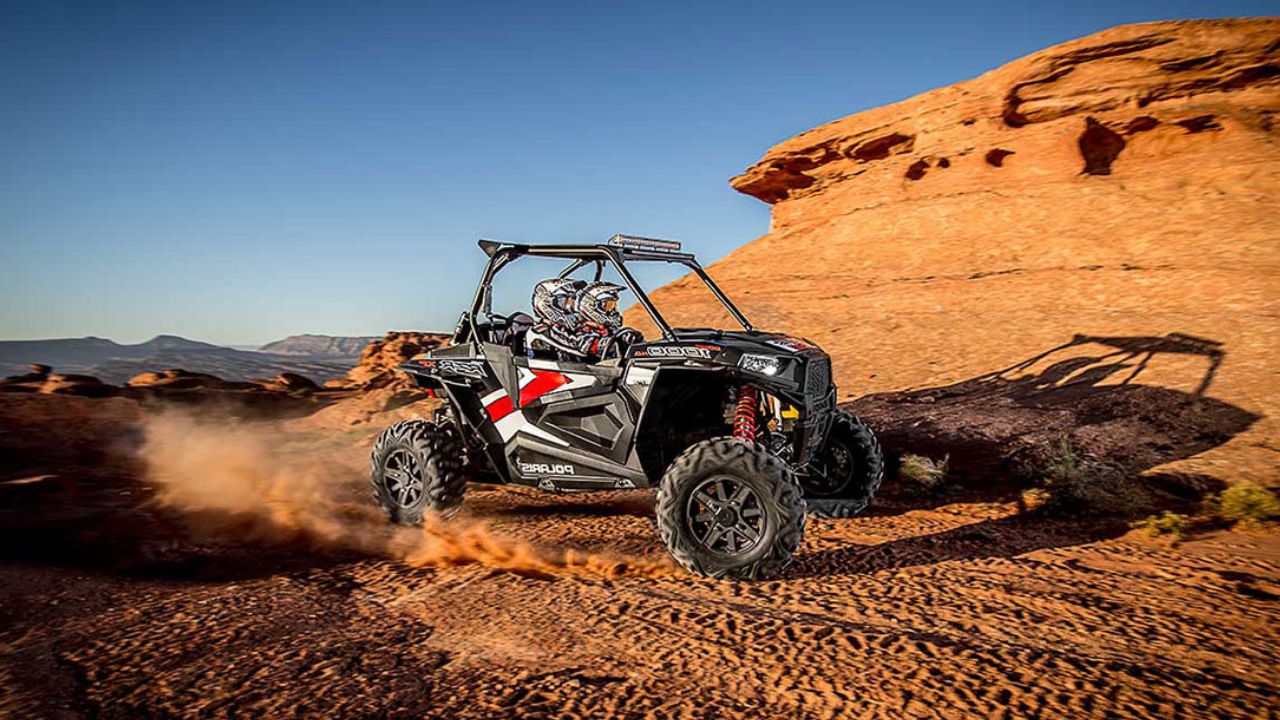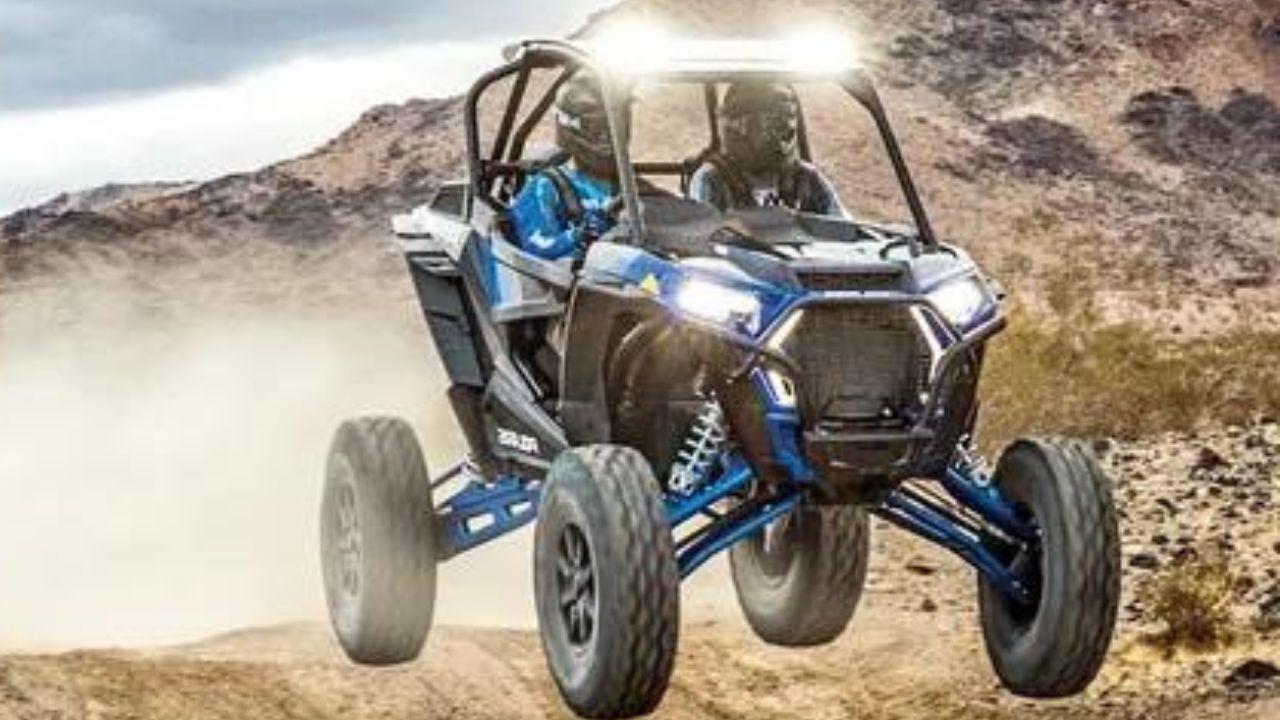Embarking on off-road adventures with a Polaris RZR is a thrilling experience, but understanding the weight of this versatile vehicle is essential for optimal performance and safe transportation. “How much does a Polaris RZR weigh?” We’ll explore the factors influencing its weight and its significance for performance and transport and provide valuable insights for enthusiasts and potential buyers.
How Much Does a Polaris RZR Weigh?
A factory Polaris RZR’s dry weight might vary; it can be as much as 532 pounds for the RZR 170 EFI and 2,026 pounds for the RZR PRO XP 4. Your Polaris RZR will become heavier as you install aftermarket extras. This not only affects the sag, stiffness, and rebound of your vehicle’s suspension system but also influences your recovery options.
For example, it is recommended that the winch you use be able to draw at least twice as much weight as your machine. So, if you have a heavier model like the Turbo S 4 Velocity RZR, weighing 1,943 pounds, a weight of more than a 2,500-pound Warn winch will be required. In such cases, opting for a winch with at least 4,500 pounds of pulling power is recommended.
Polaris RZR Weight Chart
Here’s a comprehensive chart displaying various Polaris RZR dry weights (in pounds) by model.
| Model | Dry Weight (lbs) |
| RZR 170 EFI | 532 |
| RZR 200 EFI | 684 |
| RZR 570 | 1,089 |
| RZR 900 | 1,235 |
| RZR XP 1000 | 1,498 |
| RZR XP Turbo | 1,590 |
| RZR XP Turbo S | 1,748 |
| RZR PRO-XP | 1,751 |
| RZR PRO XP 4 | 1,743 |
| RZR Turbo S | 1,687 |
| RZR Turbo S 4 | 1,943 |
Please be aware that depending on certain setups and optional extras, these weights may vary and are only estimates. Always refer to the manufacturer’s specifications for the most accurate information.
RZR Weight Influencing Factor

Model Variation: Polaris offers a diverse lineup of RZR models tailored for various terrains and riding styles. The Weight of a Polaris RZR can differ based on whether it’s a trail-focused model, a high-performance variant, or a utility-oriented option.
- Engine Size: RZR models come with different engine options, ranging from smaller displacement engines to larger, more powerful ones. As the engine size increases, so does the vehicle’s Weight due to additional components and structural reinforcements.
- Accessories and Upgrades: Many RZR oWeightcustomize their vehicles with accessories like winches, bumpers, roof racks, and upgraded suspension components. These additions can contribute to the vehicle’s overall weight and impact its performance and handling characteristics.
- Fuel and Fluids: The WeigWeighta Polaris RZR includes the fuel, oil, coolant, and other fluids required for operation. A full tank of fuel and other fluids can add several pounds to the vehicle’s total Weight.
Significance of Polaris RZR Weight

- Performance: A Polaris RZR’s Weight directly influences its performance weights, such as acceleration, maneuverability, and stability. Lighter vehicles tend to be more agile and responsive, while heavier ones may offer enhanced stability at higher speeds.
- Trailering and Transport: Knowing the Weight of your Polaris RZR is crucial for safe and legal trailering and transportation. Exceeding weight limits can strain towing equipment and pose safety risks on the road.
- Payload Capacity: Understanding the Weight of your Polaris RZR helps determine its payload capacity, including passengers, cargo, and accessories. This information ensures you stay within the vehicle’s maximum load capacity during off-road adventures or hauling tasks.
Polaris RZR Weight Variations
Polaris RZR weight variations refer to the differences in Weight among the various models and configurations of Polaris RZR vehicles. Several factors influence weight variations:
- Model and Configuration: Polaris offers a range of RZR models, each with different specifications and features. Variations in engine size, chassis design, and seating capacity contribute to differences in Weight.
- Engine Size: The engine size of a Polaris RZR can vary from model to model. Models with larger weights typically weigh more due to the additional components required to support higher horsepower and torque.
- Chassis Design: The design and construction of the chassis are major factors in determining a Polaris RZR’s Weight. Models with more robust chassis construction may weigh more than those with lighter frames.
- Optional Accessories: Polaris RZR vehicles can be customized with a variety of optional accessories such as roof racks, bumpers, winches, and cargo boxes. The addition of these accessories can increase the overall Weight of the vehicle.
- Seating Capacity and Cargo Space: RZR models with larger seating capacities or additional cargo space may have higher overall weights due to the increased size and structural reinforcements required to accommodate more passengers or gear.
Understanding the weight variations among Polaris RZR models is essential for consumers when selecting a vehicle that meets their specific needs and preferences. Factors such as intended use, terrain type, and towing capacity should be considered when evaluating the weight differences between models.
Why Does RZR Weight Matter?

- Trailering: Knowing your RZR’s Weight is crucial for selecting an appropriate trailer and ensuring safe transportation.
- Performance: Weight affects acceleration, handling, and overall performance on the trails.
- Recovery: If you get stuck, understanding your RZR’s Weight helps determine the necessary winch capacity.
Conclusion
The Weight of a Polaris RZR is essential for optimizing its performance, ensuring safe transport, and maximizing its utility. By considering factors like model variation, engine size, accessories, and fluids, enthusiasts can make informed decisions when selecting and customizing their RZR for adrenaline-fueled adventures. Whether conquering rugged trails or embarking on epic off-road expeditions, knowing the Weight of your Polaris RZR unlocks a world of possibilities for outdoor enthusiasts and thrill-seekers alike.
FAQ
Which Polaris RZR has a turbo?
The RZR Turbo R introduces a dynamic new era in side-by-sides, boasting a turbocharged engine known for its exceptional performance. Whether you opt for the 2-seat or 4-seater model, get ready to embark on thrilling off-road adventures tailored to your preferences.
Does the Weight of a Polaris RZR affect fuel efficiency?
The Weight of a Polaris RZR can impact fuel efficiency. Weight loads require more energy to propel, leading to increased fuel consumption. By optimizing Weight and reducing unnecessary load, you can enhance fuel efficiency and extend the vehicle’s range.
What weighs the Weight of a Polaris RZR impact handling and maneuverability?
The Weight of a Polaris RZR influences its Weight and maneuverability, particularly in challenging terrain. Excessive Weight can affect agility and responsiveness, making it harder to navigate obstacles. Maintaining an optWeighteight ensures agile handling and precise control.
Can I tow additional Cargo with my Polaris RZR?
While Polaris RZR models are not designed for towing heavy loads, they do offer limited towing capabilities. It’s essential to consult the manufacturer’s guidelines and adhere to recommended towing capacities. Exceeding these limits can strain the vehicle and compromise safety.
Does the Weight of Passengers Impact the Performance of a Polaris RZR?
The Weight of passengers can affect the performance of a Polaris RZR, particularly in terms of acceleration weight speed. Distributing Weight evenly and staying within the recommended passenger capacity helps maintain optimal performance and weight flexibility.

